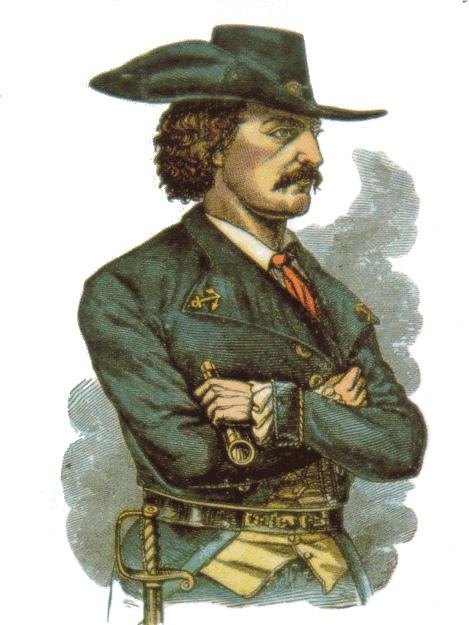More of a visual learner? Read the transcript of this week's Galveston Unscripted podcast episode below:
Tune in every Friday for a brand new episode of the Galveston Unscripted podcast.

Two prominent names often come to mind when discussing the history of pirates and privateers in Galveston. Louis Michel Aury and Jean Lafitte. Jean Lafitte's role on Galveston Island usually overshadows Louis Michel Aury's, as Jean Lafitte was the longest reigning and final pirate to control Galveston Island.But when it comes to history, there's always more to the story, and this story deals with overthrowing governments, controlling the Gulf of Mexico, and maintaining control of the strategic island of Galveston. Louis Michel Aury and Jean Lafitte, these historical figures played crucial roles in shaping the island's identity as a haven for pirates and privateers in the early 19th century.
Although their activities may blur the lines between piracy, privateering, and slave trading, the stories of Aury and Lafitte shed light on the complex history of Galveston Island. Louis Michel Aury, born in Paris in 1788, started his maritime career by serving in the French Navy and privateer ships. His experience allowed him to amass enough wealth to become master of his own vessels.
Aury, however, didn't fit the traditional image of a pirate. He was, in fact, a privateer sanctioned by recognized governments to attack ships belonging to enemy nations. These individuals were often referred to as pirates with papers. Aury's privateering activities primarily targeted Spanish shipping, motivated by a desire to free Mexico from Spanish rule.
In September 1816, Aury arrived in Galveston, marking the first establishment of a privateer government on the island. He established a settlement on the eastern end of Galveston Island and commanded eight ships as well as cannon batteries. Aury immediately began establishing a privateer government. He organized various governmental departments to speed up the progress of the privateers on Galveston.
Aury appointed a collector of revenue and customs to keep track of the lucrative piracy operation and to make sure the privateers were all paid. Aury also established a makeshift admiralty court to make sure any disputes were settled. The privateer colony also had a notary public for the authentication of documents for the privateers.
This privateer colony on Galveston Island was ethnically diverse, which is highlighted in the fact that 200 black seamen in Aury's camp mounted an insurrection, which temporarily held up the establishment of a privateer government. Once Aury established his privateer government, he was ready to get to work. Aury's privateering activities primarily targeted Spanish shipping, motivated by a desire to free Mexico from Spanish rule.
His conquest in the Gulf included capturing Spanish galleons, reselling their cargo of enslaved people in Louisiana, and then sharing the profits with his men. The enslaved people would be brought to Galveston and then shipped by land to Louisiana. The importation of enslaved people from other countries was made illegal in the United States in 1808, but the domestic slave trade in the Southern United States was strong. The enslaved people captured at sea would be brought back to Galveston and then shipped by land to Louisiana to be either turned in for a bounty at a customs house Or sold at an open slave market with forged documents. A business model that Jean Lafitte would soon repeat only a few years later.
Enslaved people were not the only cargo that Aury would capture. Like any pirate or privateer, they would take anything of value. Aury's control of Galveston was characterized by a blend of privateering and piracy, which proved profitable. However, Louis Michel Aury's primary mission was to oust the Spanish government from Mexico.
At this point, Spain maintained control of Mexico and Spanish Texas. There were very few European settlements in Spanish Texas in the 18 teens. Galveston Island made a perfect headquarters for the pirates. As a barrier island, it had a naturally protected bay. Vessels attempting to enter the bay would be spotted as soon as they came across the horizon.
In 1816, it was difficult for a government to shut down a piracy operation. Especially when those pirates are set up along the coastline of what would become Texas. And many of the pirates were very skilled sailors. Aury's control of the island was challenged when revolutionist Francisco Javier Mina arrived on Galveston Island in November 1816 with about 140 officers and men.
Initially at odds, Aury and Mina eventually worked together to undermine Spain's control of the region. Their forces grew to around 300 soldiers and a dozen ships. Aury eventually resigned his commission on July 31st, 1817, and pursued revolutionary activities against Spain to support Mita's invasion of Mexico, leaving a skeleton crew on the island. However, upon returning, he found that Jean and Pierre Lafitte had taken control of the island, and he could not regain his position.
Jean and Pierre Lafitte, the most well-known of the Galveston Pirates, had been kicked out of Louisiana for their smuggling and piracy activities. Although Jean Lafitte assisted the U. S. government in defeating the British during the War of 1812, the Louisiana and United States government had had enough, forcing the brothers to take their operation elsewhere, and just a few hundred miles away from New Orleans, was the barely protected Galveston Island, ideally situated in under-patrolled Spanish territory. Aury left valuable real estate behind to pursue other ventures. While Aury's activities combined privateering and piracy, the Lafitte brothers leaned more toward piracy.
They swore allegiances as agents for Spain and established a smuggling operation on the island. They even renamed the settlement as Campeche. The Lafitte brothers operated in Galveston from 1817 to 1820 until the United States Navy arrived and kicked them out of Galveston. Lafitte ordered that the entire pirate colony be burned. Although many pirates left Galveston with Lafitte, quite a few stayed on the island.
The activities of Aury, the Lafitte brothers, and their associates on Galveston Island continue to spark debates about whether they were pirates, privateers, or revolutionaries. Their stories reveal the complex nature of maritime activities in the early 19th century and their lasting impact on Galveston's history. The history of Galveston Island is woven with the exploits of Louis Michel Aury, Jean Lafitte, and their associates. These individuals navigated the fine line between piracy and privateering, challenging conventional definitions and leaving behind an intriguing legacy of controversy. While the debate about their true nature continues, their stories remain integral to Galveston's history, illustrating the complex dynamics of piracy and privateering in the early 19th century.

Click the image above to listen to more episodes of Galveston Unscripted podcast.